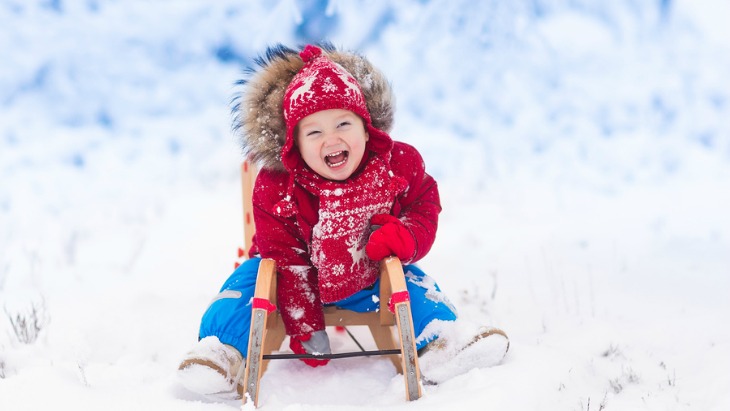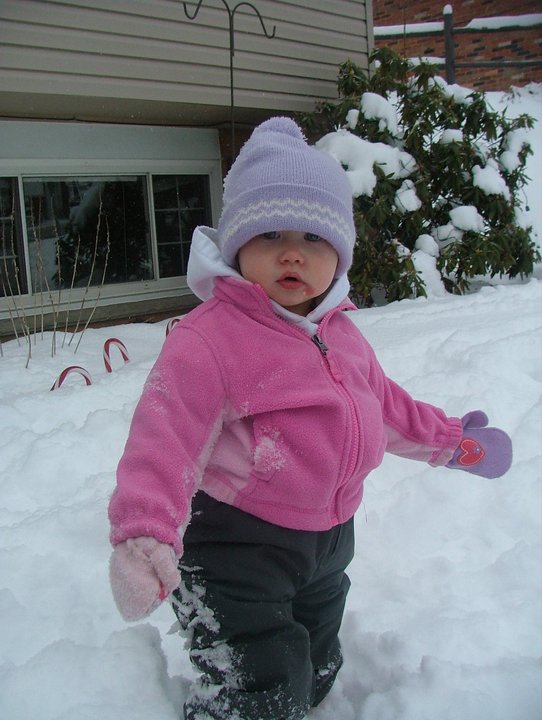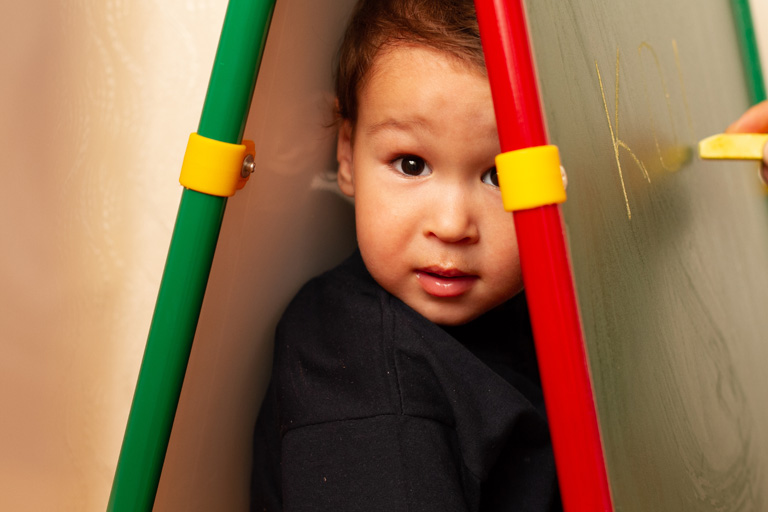
Holiday Traveling with Toddlers: A Guide to a Stress-Free Journey
December 11, 2023
How to Handle Your Toddler’s Grocery Store Meltdown
February 6, 2024Winter Dressing Tips for Toddlers
In winter, parents face the challenge of keeping their toddlers warm and comfortable, especially outside when new fallen snow creates a playground where snowmen, snowballs, and snowslides await. Here we provide some practical advice for dressing your little ones during the colder months, ensuring they are snug, safe, and ready for frosty fun.
Understanding the Importance of Layering
The key to effective winter dressing for toddlers lies in layering. It’s not just about piling on clothes but choosing the right kinds and materials. Start with a moisture-wicking base layer, such as a long-sleeved polypropylene or wool tee and leggings. (Polypropylene is great at moisture wicking, but look for materials that are hypoallergenic and fire resistant. Wool, especially merino wool, is an exceptional base layer for children’s clothing in winter. Unfortunately, wool clothing can be expensive. Cotton is a natural and affordable choice, though it is a non-wicking fabric.)
This base layer keeps your child dry and comfortable. Add a middle layer like a fleece or wool sweater and pants for insulation. The thickness of this layer can be adjusted according to the temperature. Finally, top it off with a waterproof and windproof coat or snowsuit for those outdoor adventures. The right materials here are crucial – avoid non-breathable fabrics like polyester and acrylic for this final layer as they can lead to overheating, especially during active play.
Selecting the Right Winter Gear
While polar bear, reindeer, and penguin young ones are naturally suited to their winter environments, human toddlers rely on their parents to dress them appropriately for freezing weather. Here are some tips for choosing the right cold weather gear:
Coats and Jackets
There are various types of winter coats and jackets available for toddlers. Insulated jackets are the warmest, with options between down and synthetic insulations. Fleece and soft-shell jackets provide moderate warmth and are great as middle layers, while snow jackets and 3-in-1 jackets offer additional features like powder skirts to keep the snow out while snowboarding or learning to ski.
Pants and Snowsuits
For the lower body, snow pants or snow bibs/overalls are ideal. These are typically insulated and water-resistant, providing warmth and protection against wet conditions. Fleece pants are suitable for cooler, dry days but require an additional layer in wet conditions.
Accessories: The Final Touch
Don’t underestimate the importance of accessories. Kidshealth.org emphasizes that extremities like the head, face, ears, hands, and feet are most prone to cold exposure and frostbite. Hence, invest in heavy, non-cotton socks, waterproof boots, gloves, a scarf, and a warm hat. In extremely cold weather, add earmuffs and facemasks for extra protection.
Additional Considerations for Winter Dressing
Avoiding Over-layering
While layering is essential, too much can be counterproductive. Excessive layers can cause sweating, which in turn can make clothes wet and lead to a decrease in body temperature.
Understanding Layering Materials
The material of each layer plays a significant role. Be aware that cotton absorbs moisture and can be an issue in cold and wet conditions. If your child is wearing an underlayer of cotton, then keep outdoor sessions shorter and limit activity levels to avoid excess sweating. When possible, opt for wool or synthetic fabrics for base layers and wool, down, or fleece for middle layers.
Fit and Mobility
Ensure that clothes fit properly. Tight clothing can limit circulation, leading to cold limbs. Clothes should be snug but allow free movement.
Being Prepared for Changes
Always pack a ‘dry bag’ with extra gloves, socks, pants, and shirts for unexpected situations. This is crucial in winter as wet clothing can quickly lead to discomfort and health risks.
Knowing When to Call it a Day
Be aware of the signs of cold distress, such as frost nip (fingers, toes, ears, nose, and cheeks, become pale and feel very cold to the touch) and shivering. If you notice these signs or if your child’s teeth start to chatter, it’s past time to head indoors.
Winter dressing for toddlers is a balance between warmth, comfort, and practicality. By understanding the importance of layering, choosing the right materials, and being prepared for changes, you can ensure your little ones enjoy the winter season safely and comfortably. Remember, it’s not just about bundling them up; it’s about adapting to their needs and the weather conditions.
Early Intervention Therapies
If you have been worried that your toddler is not meeting their developmental milestones and your gut is telling you they may need more support, TEIS Early Intervention can help you get answers.
If you have concerns, ask your pediatrician about Early Intervention therapies from TEIS Early Intervention.
At TEIS Early Intervention, our therapists listen to your concerns, assess your child’s individual needs, develop a customized treatment plan, and coach you along the way on simple routine-based solutions to maximize your child’s development in their natural environment.
Early Intervention evaluations and therapy services are available under the Federal Early Intervention Program for Infants and Toddlers with Disabilities. Before services can be provided, an independent evaluation of your child must be completed. To assure impartiality, one agency offers evaluation services while another provides therapeutic services.
To schedule an evaluation, call 1-800-692-7288 or email to help@connectpa.net




 Send to a friend!
Send to a friend!


